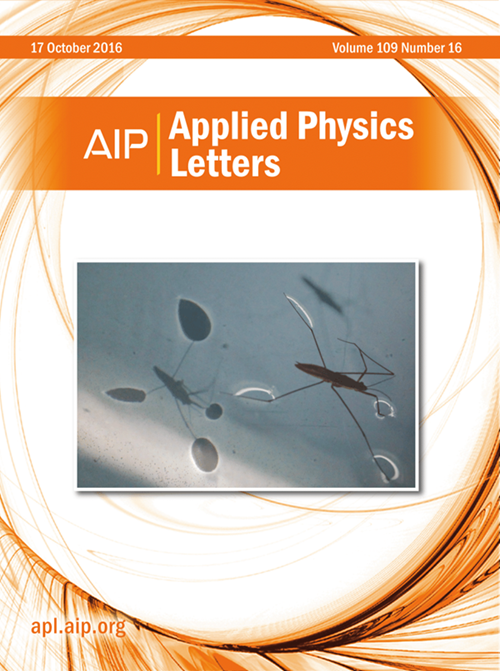Epitaxial strain reconfiguration of AlGaN multiple heterojunctions for high-responsivity high-speed UV detection
IF 3.5
2区 物理与天体物理
Q2 PHYSICS, APPLIED
引用次数: 0
Abstract
Achieving simple and efficient strain engineering remains a persistent challenge in AlGaN-based material and device research, thereby substantially hampering the realization of the inherent material advantages. In this study, a strain reconfiguration strategy utilizing a medium-temperature AlN (MT-AlN) interlayer is proposed. By optimizing the MT-AlN thickness at 1000 °C, tensile strain originating from the GaN template is systematically released through interfacial relaxation and lattice redistribution within the interlayer. Additionally, the engineered configuration also establishes a coherent crystalline template with programmable strain states for subsequent epitaxial growth. With a 25-nm optimized interlayer, crack-free Al0.35 ∼ 0GaN multiple heterojunctions are epitaxially grown on the GaN template with slight compressive strain and nearly no additional dislocations. The resultant high-crystallinity AlGaN heterostructures enable the UV photodetector to achieve high responsivity (maximum 1.4 × 103 A/W), ultrafast response speed (0.6/25.4 ns rise/fall time), and remarkable operational stability simultaneously. All these collectively validate the MT-AlN strain reconfiguration as a viable pathway for the advancement of AlGaN-based optoelectronic devices.用于高响应高速紫外检测的AlGaN多异质结外延应变重构
实现简单高效的应变工程一直是algan基材料和器件研究的挑战,从而极大地阻碍了其固有材料优势的实现。本研究提出了一种利用中温AlN (MT-AlN)中间层的应变重构策略。通过优化MT-AlN在1000℃下的厚度,源自GaN模板的拉伸应变通过界面弛豫和层内晶格重分布被系统地释放。此外,工程配置还建立了具有可编程应变状态的相干晶体模板,用于后续的外延生长。在优化的25nm中间层中,无裂纹的Al0.35 ~ 0GaN多异质结外延生长在GaN模板上,具有轻微的压应变和几乎没有额外的位错。由此产生的高结晶度AlGaN异质结构使紫外光电探测器同时具有高响应率(最大1.4 × 103 A/W),超快响应速度(0.6/25.4 ns上升/下降时间)和卓越的工作稳定性。所有这些共同验证了MT-AlN应变重构是推进基于algan的光电器件的可行途径。
本文章由计算机程序翻译,如有差异,请以英文原文为准。
求助全文
约1分钟内获得全文
求助全文
来源期刊

Applied Physics Letters
物理-物理:应用
CiteScore
6.40
自引率
10.00%
发文量
1821
审稿时长
1.6 months
期刊介绍:
Applied Physics Letters (APL) features concise, up-to-date reports on significant new findings in applied physics. Emphasizing rapid dissemination of key data and new physical insights, APL offers prompt publication of new experimental and theoretical papers reporting applications of physics phenomena to all branches of science, engineering, and modern technology.
In addition to regular articles, the journal also publishes invited Fast Track, Perspectives, and in-depth Editorials which report on cutting-edge areas in applied physics.
APL Perspectives are forward-looking invited letters which highlight recent developments or discoveries. Emphasis is placed on very recent developments, potentially disruptive technologies, open questions and possible solutions. They also include a mini-roadmap detailing where the community should direct efforts in order for the phenomena to be viable for application and the challenges associated with meeting that performance threshold. Perspectives are characterized by personal viewpoints and opinions of recognized experts in the field.
Fast Track articles are invited original research articles that report results that are particularly novel and important or provide a significant advancement in an emerging field. Because of the urgency and scientific importance of the work, the peer review process is accelerated. If, during the review process, it becomes apparent that the paper does not meet the Fast Track criterion, it is returned to a normal track.
 求助内容:
求助内容: 应助结果提醒方式:
应助结果提醒方式:


